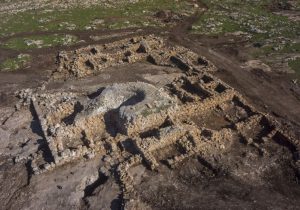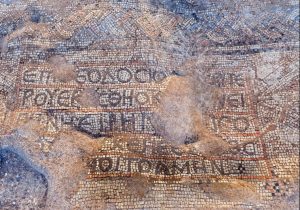Excavations in Rosh Ha’ayin (Central Israel) unearthed rare and well-preserved remains of a 2700-year-old farmhouse and 1500-year-old church. Inside the church additionally colourful mosaics and numerous Greek inscriptions were found. The excavations were conducted prior to construction of a new houses in the area. The ancient remains will be conserved in situ and will be displayed and open for the benefit of the public.

The discovered area of the farmhouse measures 30 metres by 50 m. The building once contained 24 rooms. Among the findings was a large storage silo intended to protect exposed grain. Also numerous millstones, simple rock-hewn oil presses and two silver coins from the 4th century BCE that bear the likenesses of the goddess Athena and the Athenian owl were found.

The farmstead was abandoned in the Hellenistic period and later in the 5th century, during the Byzantine period, a monastery was built. It contained the church building, an oil press, residential quarters and stables equipped with mangers and troughs. The floor in the church was decorated with colourful mosaics that included geometric and other designs.
(after The Jerusalem Post)